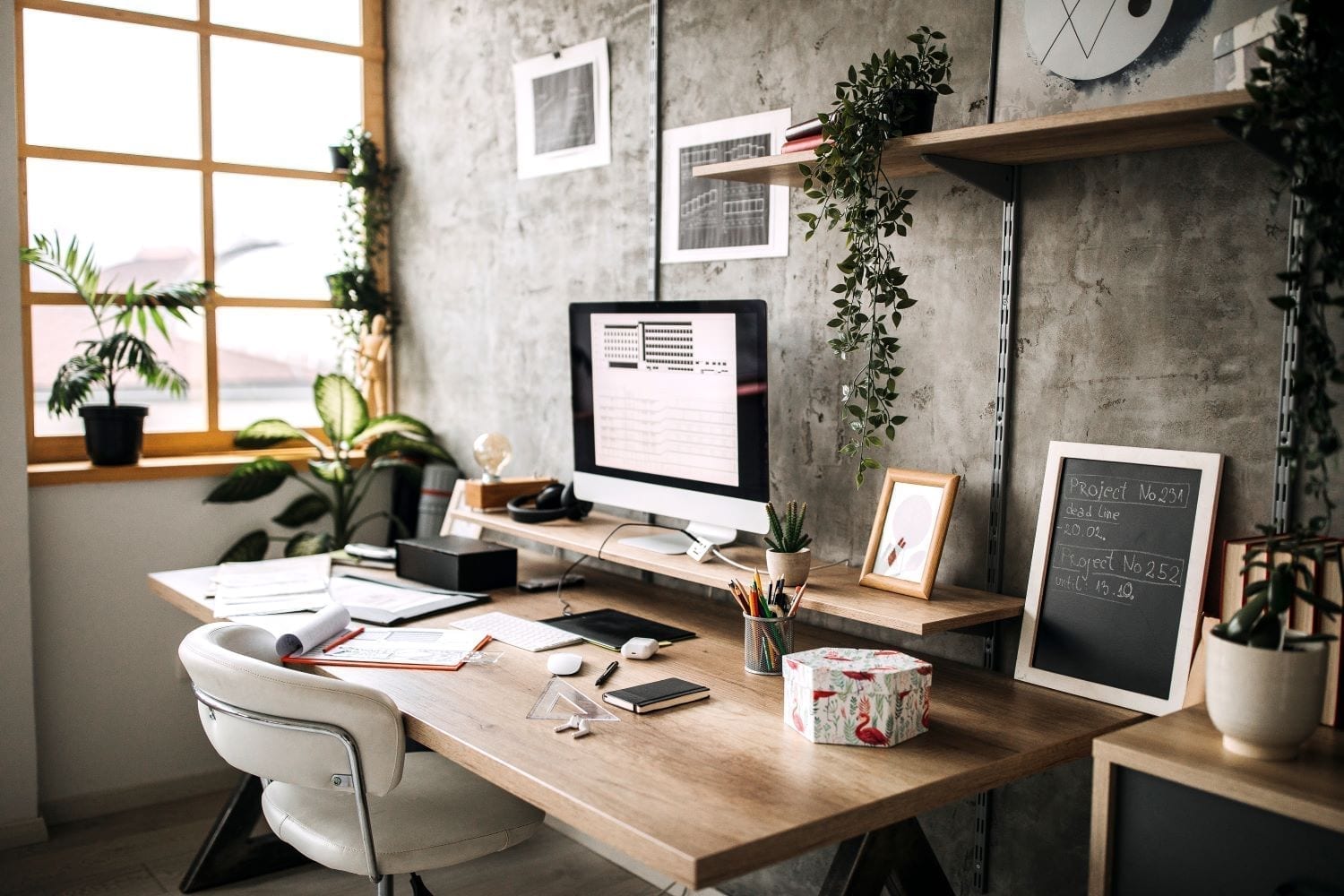2023 home office trends to embrace style and productivity

In 2022, the proportion of people both working at home and at their usual place of work (“hybrid working”) has risen1 with dedicated home office spaces becoming the norm.
But with searches for ’how to improve hybrid working’ increasing by +600% in the last 12 months 2, it seems many are looking for inspiration to boost their current working life.
To help those wanting to spruce up their space, Kirstie Batty, DIY expert and Head of Merchandising at trade supplies company, GTSE.co.uk, has teamed up with interior specialists to reveal five essential 2023 home office trends that are guaranteed to embrace style and productivity.
1. Colour infusion
Ryan McDonough at Myjobquote.co.uk3 says: “If your work relies on you being creative and full of energy then Magenta, Pantone’s 2023’s colour of the year, is great for invigorating home offices and boosting your energy. Raspberry is also a colour that’s tipped to be big.”
However, if you want to keep calm and relaxed whilst working, Lucy Henderson at My Bespoke Room4 recommends the opposite: “Soft pinks, greens and blues are a popular choice as blues and greens aid mental stimulation and our eyes don’t have to adjust to the colour green, so they don’t have to work as hard! Soft blush pinks work well with blues and greens, and light pink can be quite a warming colour, therefore, a room will instantly feel relaxing when painted in this colour.”
Kirstie’s quick DIY tip: “When painting your walls, use a primer first as it’ll give the best adhesion for the paint. Priming over a dark colour before painting it light is key. If your final paint colour is dark, then use a dark-tinted primer first.”
2. Industrial and biophilic styles
For those wanting to completely switch up their home office interior theme, Ryan gives his opinion on which styles will be big: “After a tough winter, we’re going to be looking forward to spring and the natural world bursting back into life. So, the trend for biophilic design with greens, florals and natural materials is set to continue. Studies have shown that having greenery in the workspace can reduce stress and increase productivity and the overall mental health of workers, so this trend is key.
“The industrial trend is also making a return with smart, modern home offices full of natural wood tones and black metal.”
Kirstie’s quick DIY tip: “If the biophilic theme is the one for you, grab some old photo frames, staple chicken wire across the back to create a base, and then fill the centres with rich green moss, small ferns, or succulents to bring the theme to life. Then, hang them on your wall or place them on your desk. To avoid damaging your wall, simply use self-adhesive cable tie bases with cable ties inserted in them to hold the frames in place.
3. Second-hand and upcycled pieces
“Sustainability will continue to be important in terms of furniture, so wooden, second-hand and upcycled desks and storage will be sought after. Think iconic mid-century desks and repurposed shelving. Multi-functional pieces of furniture and items that inject more personality into your workspace will also be big in 2023” says Ryan.
Kirstie’s quick DIY tip: “To save costs if you don’t want to buy furniture, re-varnish or paint your old furniture to give it a new lease of life. Be sure to lightly sand the surface and prime it before painting to ensure the paint sticks and lasts for years to come.”
4. Organic shapes and hand-crafted accessories
“Organic shapes and a hand-crafted look are what we’ll be seeking in terms of home office accessories in 2023. This is easy to incorporate by switching out neat plant pots for more rustic ones and using small shapely vases as pen holders. This will soften the hard edges of our office furniture, so we feel settled and at home while working” explains Ryan.
Kirstie’s quick DIY tip: “If you have old materials in the house, such as throws, clothes, and other fabrics, hang onto them. If you’re handy with a sewing kit, you could make a new throw to chuck over your desk chair, or even make new cushion covers to place on your furniture.”
5. Low-maintenance greenery
It’s not always easy to keep greenery alive, and if we’re wanting to limit stress levels, low-maintenance plants are key. Kirstie shares her favourite plants for the home office: “Devil’s Ivy adapts well to different conditions, including low light rooms. The easy-to-care-for plant can be placed on your desk, shelf, or side table.
Spider plants and snake plants are also another good shout and can go a few days between watering. Don’t forget about the peace lily either, but whilst you need to keep the soil moist, you should avoid overwatering.”
Kirstie’s quick DIY tip: “If your plants need to be trained and supported whilst growing, my best tip is to create support by using biodegradable cable ties – perfect for temporary purposes until they can create their own support.”






